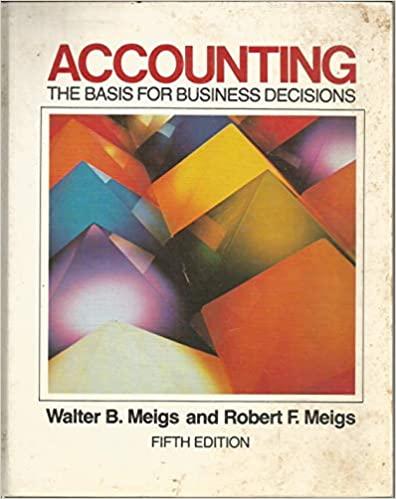Applying the Concepts Assume that Medco, Inc, had the following Nonvalue-Added Costs reported in Year 1: Activity Non-Value-Added Costs Purchasing Molding Inspecting $121,000 68,000 125,000 43,000 $357,000 Grinding Total Assume that at the beginning of 2014, the molding process was redesigned and the employees in Molding were trained in a new work technique. By reducing the number of bad molds, the firm hoped to significantly reduce waste for all four activities. Purchasing and Inspecting resources are purchased in steps of 2,000 hours. The other two activities are acquired as used and needed. At the end of Year 2, the following results were reported for the four activities: Activity Activity Driver Purchasing Purchasing hours Molding Molding hours Inspecting Inspection hours Grinding Number of units SQ AQ SP 28,000 30,000 $20 42,000 40,000 12 0 2,000 15 0 2,500 6 Required: 1. Prepare a trend report for non-value-added costs by completing the following table: Activity Purchasing $ $ $ Molding Year 1 121,000 68,000 125,000 43,000 357,000 Year 2 40,000 24,000 30,000 15,000 109,000 Change 81,000 44,000 95,000 28,000 248,000 Inspecting Grinding Total $ $ $ 2. For value-added activities, the non-value-added component is from using too much of the activity, activity reduction is the result of improving activity efficiency. For non-value-added activities, activity elimination is the ultimate objective. 3. Suppose that at the end of Year 2, the selling price of a competing product is reduced by $10 per unit. Assume that the firm produces and sells 20,000 units of its product and that its product is associated only with the four activities being considered. The $ (Round your answer to two decimal places.) savings per unit of product allows Medco to match or beat the competitor's price reduction without changing the unit profit margin. By virtue of the waste-reduction savings, can the competitor's price reduction be matched without reducing the unit profit margin of the product that prevailed at the beginning of the year? Kaizen Costing Kaizen costing is concerned with reducing costs by making small continuous improvements to existing products and processes. In operational terms, this translates into reducing non-value-added costs. Controlling this cost reduction process is accomplished by repetitive use of two major subcycles: (1) the kaizen or continuous improvement subcycle, and (2) the maintenance subcycle. The kaizen subcycle is defined by a Plan-Do-Check-Act sequence. If a company is emphasizing the reduction of non-value-added costs, the amount of improvement planned for the coming period (month, quarter, etc.) is set (the Plan step). A kaizen standard reflects the planned improvement for the upcoming period. The planned improvement is assumed to be attainable, and kaizen standards are a type of currently attainable standard. Actions are taken to implement the planned improvements (the Do step). Next, actual results (e.g., costs) are compared with the kaizen standard to provide a measure of the level of improvement attained (the Check step). Setting this new level as a minimum standard for future performance locks in the realized improvements and simultaneously initiates the maintenance cycle and a search for additional improvement opportunities (the Act step). The maintenance cycle follows a traditional Establish-Do-Check-Act sequence. A standard is set based on prior improvements (locking in these improvements). Next, actions are taken (the Do step) and the results checked to ensure that performance conforms to this new level (the Check step). If not, then corrective actions are taken to restore performance (the Act step). Apply the Concepts An automotive parts division has a grinding activity for the subassemblies that it produces. Activity output is measured using grinding hours. The value-added standard (SQ) for this activity is zero grinding hours. On July 1, at the beginning of the fiscal year, sixteen grinding hours were allowed per batch (which almost always corresponded to the actual grinding hours used). The standard wage rate is $20 per grinding hour. During July, a new procedure for production of the subassemblies was developed with the expectation that the demand for grinding would be reduced by 25 percent. The new procedure was implemented in August and expectations concerning the effect on the grinding activity were met. Required: Required: 1a. The maintenance standard per batch at the beginning of August (for grinding): hours 1b. Expected grinding cost (per batch) on August 1: $ 1c. Kaizen standard, August 1: hours per batch 1d. Expected cost (Kaizen), August 1: $ 2. Assume that a 20 percent reduction in time for grinding was achieved in August. After determining that this reduction is sustainable, the maintenance subcycle would be revised as follows: 2a. New maintenance standard per batch, end of August (for grinding): hours 2b. Expected grinding cost: (Round your answer to one decimal place.) $










